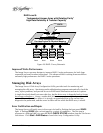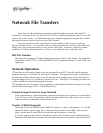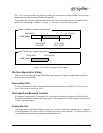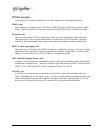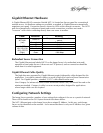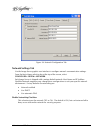
96 = Network File Transfers
Network File Transfers
Apart from recording and playing program content through composite video and SDI
connections, the Image Server can also act as an FTP server, delivering program material across the
room or across the country. Its Gigabit Ethernet port is standard equipment, and provides reliable
high-speed transfers at much lower cost than Fibre Channel.
The actual network transfer rate depends on the number of video streams also being
played, and their bit rate. To ensure that video recording and playback can always take place, the
Image Server gives network transfers a lower priority than video. In practice, broadcast content
encoded at 12 Mb/sec should transfer at a 5X rate, even while the server is playing video.
MXF File Transfers
The Image Server supports FTP-based import and export of files in MXF format. The applicable
standards are SMPTE 377M, 378M and SMPTE 381M. Operational Patterns 1a and 1b files are
supported.
Network Operations
FTP transfers to and from the Image Server are managed from an FTP client file transfer manager
program running on a Windows® or Macintosh® computer. This approach provides a rapid way to
execute drag-and-drop file transfers; it can also manage many Image Servers at once and does not
tie up the Image Server GUI, which may already be in use. Third party FTP manager programs are
readily available for download through the Internet.
FTP programs may also be used to move recorded or edited material between an Image Server and
network attached storage (NAS) or a DVD-ROM library.
Using the Image Server in a Large Network
From a networking or system integration viewpoint, the Image Server appears as a normal drive
to an FTP server in any size network, with the exception that it may only send, receive, or store
video files that are compatible with the Image Server.
Transfer of Edited Segments
The Image Server sets MARK-IN and MARK-OUT points in a clip as “edit pointers.” For all edit
operations within a given Image Server, these pointers produce “virtual edits” that save disk
space, and the time it would take to re-write the marked region as a new file.
It is clearly impractical to transfer a long file to obtain a 30-second virtual clip marked within it.
Therefore, the Image Server transfers only the region between In/Out points, and not the entire



